Movie Review – Lord Of The Rings, The: The Fellowship Of The Ring
Principal Cast : Elijah Wood, Ian McKellan, Sean Astin, Viggo Mortensen, Billy Boyd, Dominic Monaghan, John Rhys-Davies, Orlando Bloom, Sean Bean, Ian Holm, Liv Tyler, Cate Blanchett, Hugo Weaving, Sala Baker, Andy Serkis, Lawrence Makoare, Marton Csokas.
Synopsis: A meek Hobbit from the Shire and eight companions set out on a journey to destroy the powerful One Ring and save Middle-earth from the Dark Lord Sauron.
****
When embarking upon a review such as this one, encompassing all three blockbuster films in the Lord Of The Rings trilogy, you tend to feel, I think, a lot like a dwarf or a hobbit taking on the Orc armies: a little overwhelmed. Not only has the film trilogy version of JRR Tolkien’s massive work of fiction become almost unassailable critically, it has entered the popular lexicon of cinematic legendarium to become almost one with the public’s imagination. Never before has there been a film success like the three Lord of The Rings movies. Peter Jackson’s brave undertaking, as well as the backing of New Line Cinema, to film all three movies at the same time, was a risky move in Hollywood terms. And it ended up paying off handsomely.
Not only would the three films combine to produce one of the most successful film franchises of all time, but it would invigorate the New Zealand film industry, and raise awareness of just how successful literary works could become. And when film three, The Return of The King, won all eleven Oscars for which it was nominated at the 2003 Academy Awards, the trilogy was forever cemented into the history books of Hollywood.
Yet, it was a strange case of lightning striking in just the right place, at just the right moment. And thank God for Bob Shaye.
For it was Bob Shaye, sitting in his office listening to Peter Jackson’s pitch for the films, who told the relatively unknown and inexperienced director that he wouldn’t make two films. He’d make three. I say inexperienced in explaining that Jackson was still a relatively new Hollywood force, with low budget splatter films behind him and a resume hardly long enough to fill a thimble. Heavenly Creatures, an earlier film, had been a critical success, however it had not set the world on fire. What it did do, more than anything, was show producers across Hollywood that Jackson was capable of human drama, something Meet The Feebles and BrainDead were unable to do. It showcased a director in touch with the medium.
Jackson’s last work before commencing on the Rings project was The Frighteners, a critical nightmare of a film, yet one that showcased the directors ability to handle large scale effects.
So how did a director of Jackson’s resume, coupled with a studio still finding it’s feet and traditional home of slasher films (Freddy vs Jason?), find a way to make the Trilogy of Trilogies?
Lets’ start at the beginning.
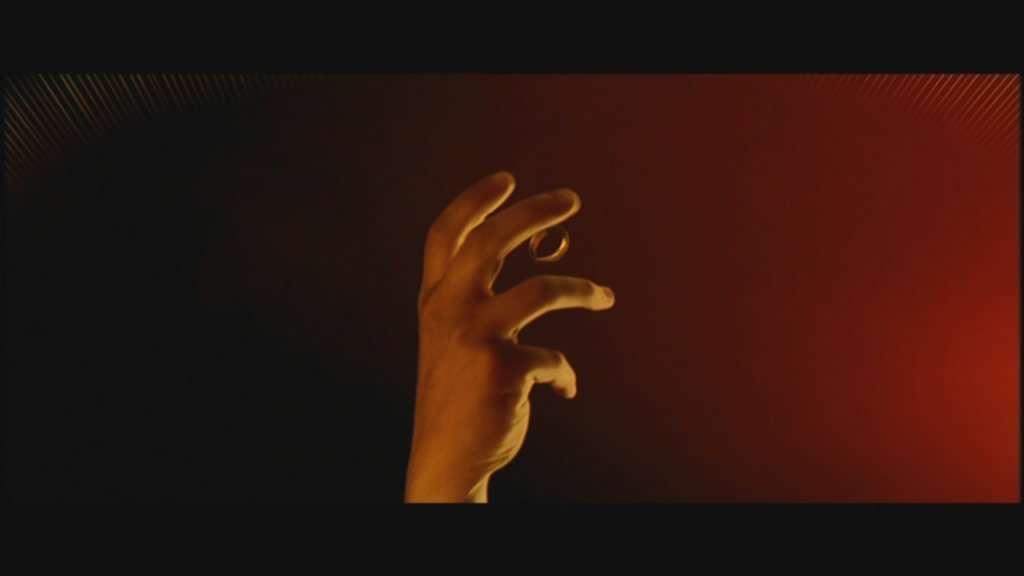
The Novel Becomes A Film Trilogy
During the early part of the twentieth century, while the world was engaged in it’s multitudinous wars and sexual revolutions, English Oxford Don JRR Tolkien was inventing his staggeringly complex world of dwarves, dragons, elves and men, defining a new raft of languages and a whole history unlike the world had ever seen. Intensely private, Tolkien set part of his first book down, using ideas from what would come to be known as his Legendarium (the history of his created world, Middle Earth) in a tome that was to be entitled The Hobbit. in perhaps one of the greatest literary serendipitous moments, he wrote on the back of an exam paper: In a hole in the ground there lived a hobbit.
Tweaking that idea, he then had to explain what a hobbit was, why he was in the ground, and exactly why he enjoyed being there in the first place. This seed, which would lead a young hobbit named Bilbo all across Middle Earth in a search for treasure, would become his first successful novel. The Hobbit became a massive success, and the professor was asked by his publisher to continue the adventures of Bilbo and the world he lived in.
Tolkien not only created a sequel to The Hobbit, but he managed to contort the literary world around himself in the process, when the first part of his follow-up was published in 1954, entitled The Lord Of The Rings: The Fellowship of the Ring. The book, which told of a dark and evil force growing in far off lands of Middle Earth, was set some time after events in The Hobbit, and grew from a simple story of Bilbo finding a magic ring (told in The Hobbit) into a world shaking, and shaping, adventure story. Encompassing multitudinous characters, most of whom were described in great detail by Tolkien at first, a scale of history perhaps never before seen on the printed page, and an all consuming evil that would come to represent so much to so many.
If you’re reading this review, and have made it thus far, there’s very little point in recapping what the story is about. I doubt there’s a person alive today who wouldn’t have some comprehension of the storyline of The Lord Of The Rings. Frodo, Gollum, Merry & Pippin, Gandalf and Aragorn; all these characters have entered the public consciousness and are well known by all around the world.
But, back in the 50’s, the story was captivating in a way that pre-dates what was possible on the cinema screen. Widescreen epic storytelling was something you’d not think to find coming from a stuffy Oxford professor, in a way that was both expository and utterly dense in language and style; at first his publishers held off on the book as they felt it was too… well, incomprehensible.
Fellowship of the Ring, the first part of what would become a trilogy, told of Frodo, Bilbo’s nephew, inheriting the magic ring from his Uncle and setting out on a great quest with Gandalf to destroy it. The Ring, you see, is the property of Sauron, the lord of Mordor and one of the last of the Eldar, a race of God-like beings who ruled Middle Earth before time was time. The ring has the ability to allow it’s wearer to become invisible, but in doing so, can be seen by Sauron, who desires it to complete his power and rule the world.
Frodo, together with wizard Gandalf, his cousins Merry and Pippin, and gardener Sam, take off to the Council Of Elrond (a wise elf, who fought Sauron in an earlier battle when the dark lord lost his ring) to determine what should be done to rid the world of this evil once and for all.
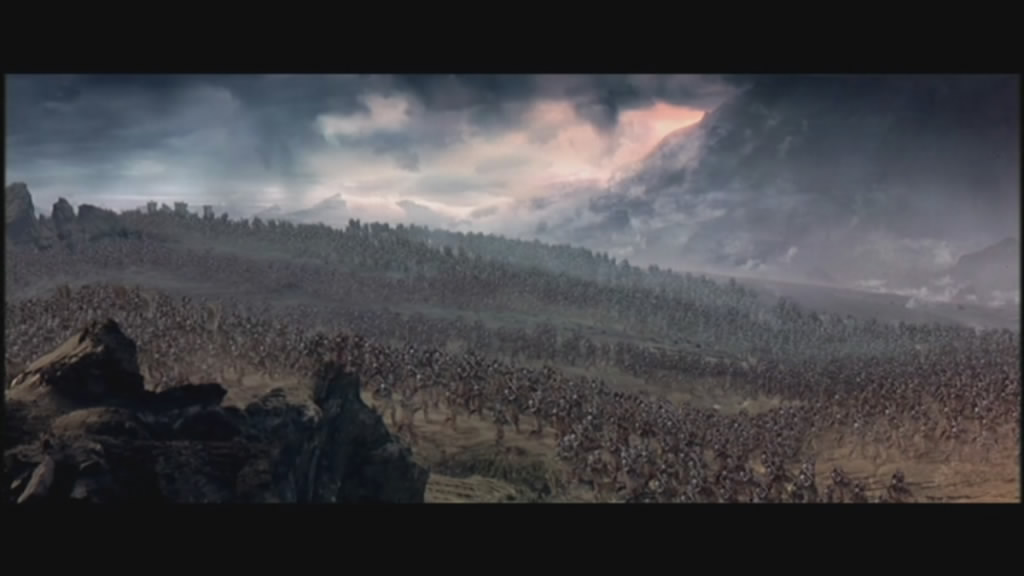
Yep, your standard buddy/road movie, right?
As the novel progressed, the book became more and more dense with ideas, as Tolkien began to throw more and more of his mythical world into play. Creatures and ideas that had formed decades earlier were now being woven into the very fabric of this story, all their history and languages coming into play.
As mentioned many times, the books were incredibly wordy, structured in a way as to redefine storytelling, and the pacing was, to be honest, all over the place. Fellowship, told in a more linear style with plenty of exposition and explanation, morphed into a more simplistic, multi-layered and rushed style by the end of Return Of The King. Indeed, the concepts and prosaic style of the final book told more story in half the pages than the first novel!
But I am not here to review the books, Tolkien’s style or even validate his choices. What we are here today to do, is simply look at the way in which the books were turned into three monumental films.
Peter Jackson, a New Zealand filmmaker of some success, went to many major studios during the last half of the 90’s, pitching an idea for Tolkien’s novel to become a series of films. Originally, Jackson envisaged three films, to correspond with the three books in the story, yet budgetary constraints prevented most of those studios from being really interested.
When Jackson approached New Line Cinema, he was pitching his ideas to head-honcho Bob Shaye at the studio headquarters when the deal was struck. Shaye, who could see the potential of the material, and Jackson’s talent, so he gave the director and his writing partner Fran Walsh (together with fellow scribe Phillipa Boyens) the green light to make three films.
Admittedly, there would have been a lot of fear in the Hollywood machine for a project of this scale. All three films would be shot at the same time, all in New Zealand, and using only a handful of recognizable actors in the key roles. The potential for disaster if things came unstuck was enormous, and Jackson’s shoulders bore the brunt of the pressure. But if he felt any, Jackson never showed it. His enthusiasm and passion for the project was unparalleled, and this infectious desire for perfection saturated the entire production.
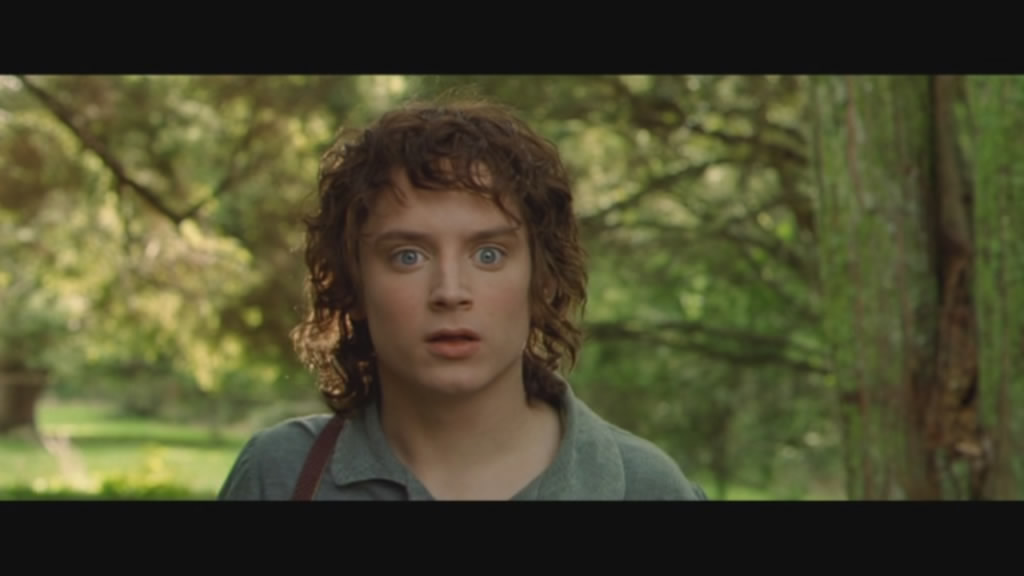
Starting on Fellowship
Filming on Fellowship Of The Ring started in October 1999, stopping for a while over the New Years holiday, before recommencing in the new century, up until the end of December, 2000. The second novel, The Two Towers, as well as Return Of the King, were all principally shot over this period. During post production, however, over the course of the next few years, the cast and crew would reunite for pickup shoots and extra work, which carried over until the final film’s release in 2003.
Jackson, Walsh and Boyens worked tirelessly over the script, honing, refining, mixing and adding material that was pertinent to the story. Much to many fans’ chagrin, some of Tolkien’s work was removed from the screenplay, such as Tom Bombadil, this character in particular being beloved and expected: there was much criticism of Jackson when it was revealed that Bombadil would not be appearing in the film.
However, what Jackson and his team were trying to do was remain as faithful as possible to the original text, and yet create a workable storyline in which to move. Tolkien’s novel would, as stated by Jackson numerous times, be impossible to film scene for scene, with all the dialogue and action included. So what they did was pare back the extraneous material, ideas that weren’t relevant to the story they were trying to tell, and put more time into the material that was! Bombadil, as much as he’s a funny old fellow, hey diddle dee, was as much a footnote in the overall scheme of things as you can get: he could have been removed from the original novel without too much fanfare and the story would remain the same.
Mostly, Jackson’s script stuck closely to what Tolkien’s characters would have said, and even borrowed lines from other characters elsewhere in the novel. This sense of character helped define the way the film was received by audiences, many of whom were fans of the original books; perhaps they even recognized key lines and phrases from the novel.
Among the great casting decisions Jackson made was to cast Sir Ian McKellan as Gandalf. Otherwise known to movie audiences as Magneto from the X-Men series, McKellan, together with some great make-up, made a convincing and believable wizard, in whom a fair repository of knowledge and wisdom is stored. It’s Gandalf who is the key to the first part of the story, and indeed the films’ overall: after all, he is the one who discovers the true nature of the Ring, and instills in Frodo a sense of urgency for it to be destroyed.
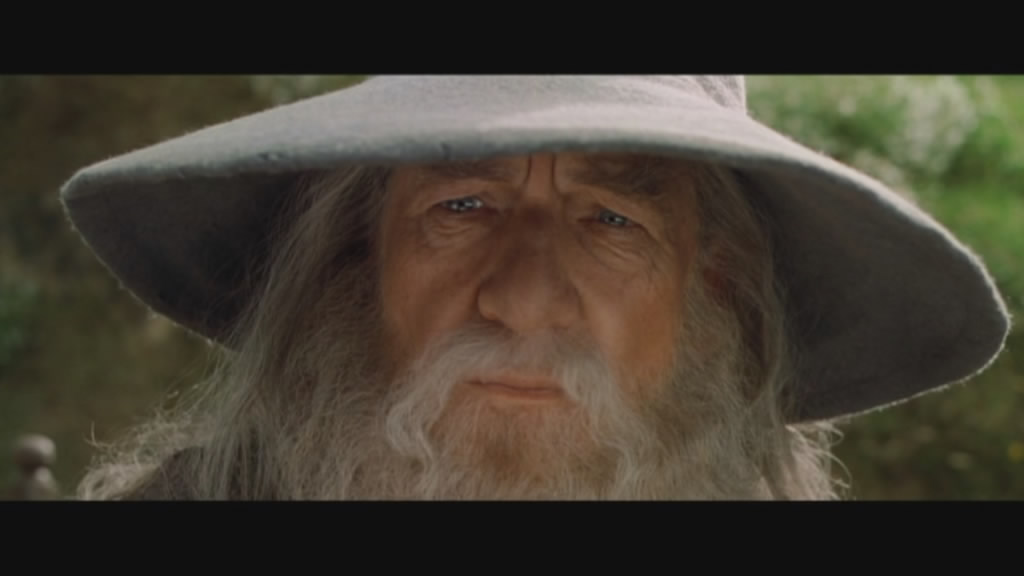
Elijah Wood, a young actor from California, blessed with amazingly large eyes, was cast in the pivotal role of Frodo, and it would be he who has to climb the mountain of fire in order to destroy the ring. Wood, whom had only really appeared in family films of note up until that point (as well as big budget disaster movie Deep Impact) was a pivotal choice: his ability to convey the incredibly detailed emotions and carry the weight of the film on his tiny shoulders was paramount to the film’s success.
Standing alongside Wood was one-time star (and former child actor) Sean Astin, son of John Astin, the man who played Mr Addams in The Addams Family, as Samwise Gamgee, Frodo’s gardener and friend, who would accompany his master to the mountain of fire. Astin would win rave reviews for his portrayal of the steadfast hobbit, who would, in the end, triumph over evil as the one who turned the tide at the last.
Vito Mortensen, previously best known as the kick-ass commander from GI Jane, that obnoxious army film from Ridley Scott, played the more traditional heroic role in Aragorn, a fallen royal with a large chip on his shoulder. Aragorn returns from a self-imposed exile to lead the fellowship on it’s quest to destroy the Ring.
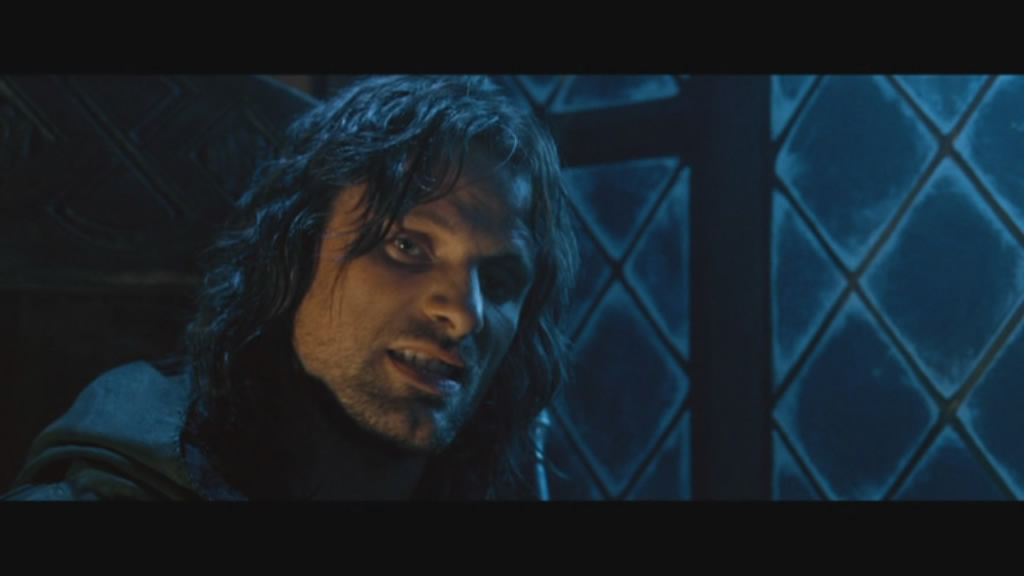
The womenfolk of the film, and to be honest, there’s not too many of them in Tolkien’s original work, so Jackson and Co had to work some magic to get them into the film in a convincing way, are Liv Tyler and Cate Blanchett.
Tyler, the daughter of Aerosmith frontman Steve Tyler, plays Arwen, the love interest of Aragorn and the daughter of Chief Elf Elrond (played by Mr Smith himself, Hugo Weaving sans sunnies!). If there’s a film that exists on planet Earth that proves that Liv Tyler is one of cinema’s true leading ladies, and is as stunning as any female star that has come before her, Fellowship Of The Ring is it. Tyler is truly luminous, her stunning good looks and delivery of the elvish language will almost make your heart skip a beat.
Blanchett, on the other hand, is less benevolent in her role as the all knowing, all seeing female counterpart to Elrond, in Galadriel, the Lady Of The Lake. Galadriel seems content to skimp about her treetop home while the world goes to crap, and while her part in the original novel is limited to only a few chapters, Jackson and his team manage to get her into each of the three films in some ways. Blanchett is luminous, but in a more masculine way.
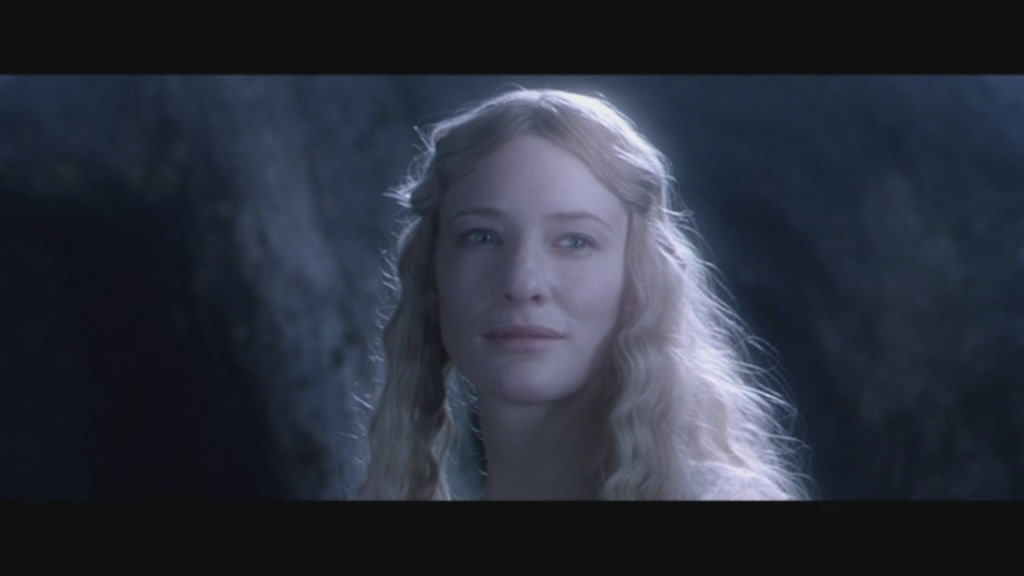
Cinema legend John Rhys-Davies (Asps, very dangerous!) plays a dwarf; this in itself is cause for a chuckle, as Rhys-Davies himself is quite a large man, towering over all the cast save Mortenssen and McKellan. Still, using trick photography and digital effects, Jackson manages to get the man to half the height of everyone else except the hobbits.
Speaking of the hobbits: Jackson cast unknown actors in the roles of Merry and Pippin, Frodo’s cousins who would accompany the Fellowship on their solemn quest. Billy Boyd, in the role as Pippin, and Dominic Monaghan as Merry, managed to create worthy and emotional connections with their characters, and while initially in the film as comedy relief, they developed over the course of the trilogy into characters with more heart and soul than just about any other.
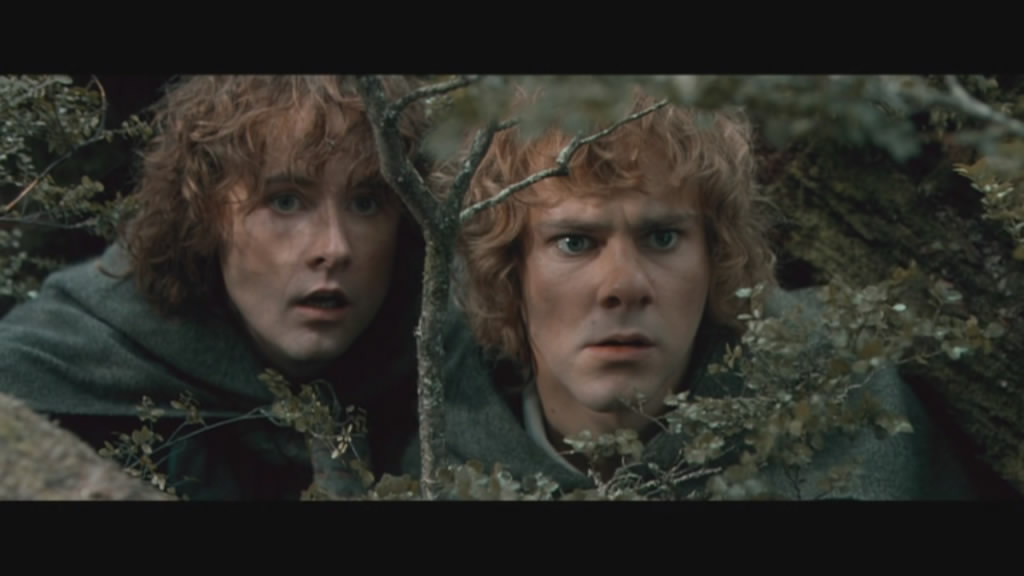
In many ways, Merry & Pippin represent us, the viewer, in these films. While Frodo and Sam, Gandalf and Aragorn are weighed down with the magnitude of their quest, Merry & Pippin are less so, and consequently we kind of see them as our human equivalent, hanging about for a laugh and to drink and eat when possible. It’s their emotional investment in the three films that gives them their human heart, as opposed to any of the other characters.
Screen legend Ian Holm was cast as the elder hobbit Bilbo, the one who found the Ring in the Misty Mountains after encountering Gollum, a mysterious creature who lived in the darkness, bitter and twisted. Holm’s delivery of the books most famous line, during his birthday party, is simply perfect, and I doubt there was a more appropriate choice of casting in the whole production.
Lastly, in the Fellowship, we have Legolas, an elf from far off lands who joins the quest. Played by newcomer Orlando Bloom, his good looks and ravishing fighting style would surely endear him to any and all female viewers. This piece of casting, as they say, is history. Ironically, it’s Bloom, in one of the trilogy’s most underrated roles, who came out of this whole thing the best. He’s now a bigger star than any of his fellow cast members, in most respects, and has gone on to star in many of the top grossing films of all time.
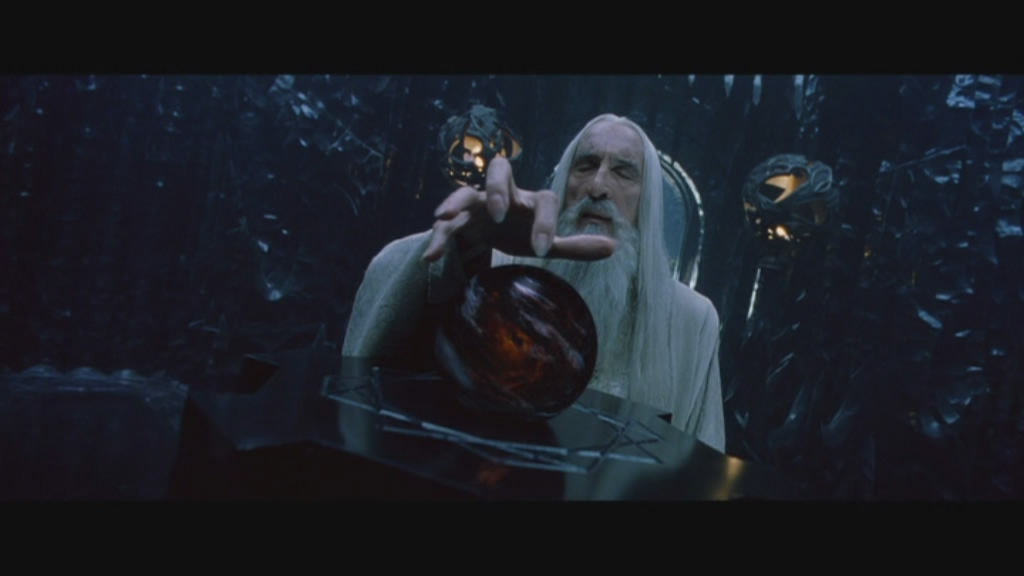
Filming The Fellowship
In order to make the film, and film it as realistically as possible, Jackson and his team made extensive use of the New Zealand landscape, filming from mountaintop to jagged canyon, rivers and sweeping dells, in order to achieve the right look for the trilogy. Tolkien’s original work relied on the imagination of the reader to transport you to another world, to mythical forests and mountains: here, the filmmakers had to replicate it in as much detail as cinema would allow.
And boy, did they allow a lot!
The level of detail with which Jackson approached the film is simply staggering. Entire sets were built into the landscape years in advance, in order to capture the feeling Tolkien managed with simply words. The Shire, in which Hobbits have dwelt for hundreds upon hundreds of years, looks for all the world like it has existed for those eons, when you watch the film. Rivendell, home to Elrond as the elves, looks like it was grown out of the trees, such is the level fo detail within each frame and set. The costumes and props were all hand made, as they’d have to be considering nothing in Middle Earth exists in the real world. Every cup, book, box, sword, spear, armor and helmet, every jacket and trouser; all designed, approved and manufactured from scratch by hundreds of artisans scoured from all across New Zealand, and around the world. The filming schedule meant that Jackson himself would not be able to be in all locations at the same time, meaning his second unit, and third unit, and fourth unit crews would rely on a massive technological up-scaling of resources just to be able to keep track of what was happening.
Jackson made the move to film predominantly on Fellowship at first, in order for the cast to build up a rapport that would transfer onto the screen. Thus it was that the majority of Hobbiton and the fellowship’s trek across Middle Earth to Rivendell was filmed first, with the rest of the three films footage captured afterwards.
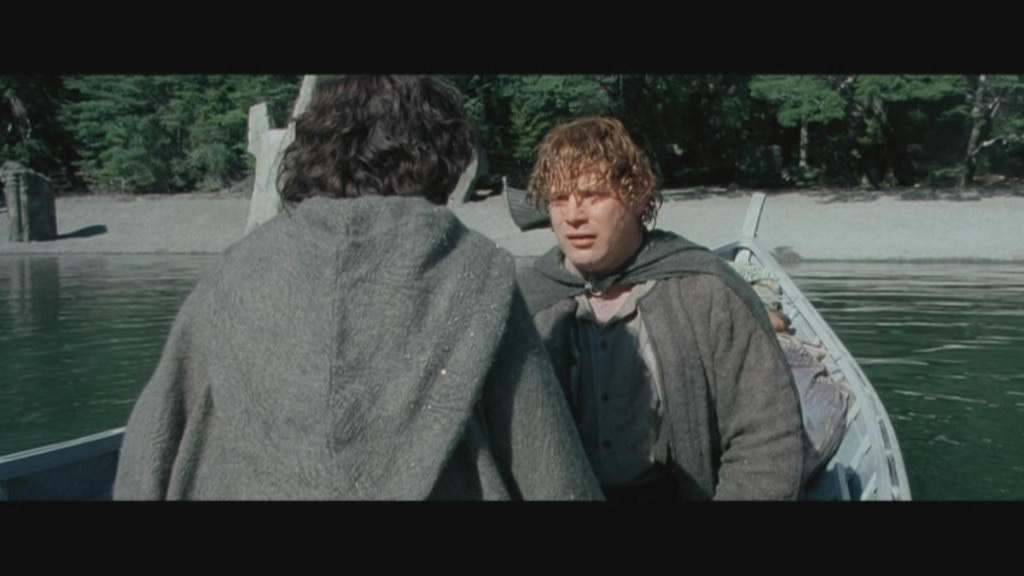
Watching the films, you truly get a sense of just how much was built, created, painted, drawn, hammered, scraped and glued together with the bare hands of hundreds of crew-members. Most people only watch the films and see what they see on screen. For me, watching all three films reminds me of just what humanity is capable of when inspired, when called upon to deliver something of unquestionable quality and decency to their fellow man. Big call. Defy me if you dare!
While this review will focus on the first film of the trilogy, I felt it necessary to at least mention the work that was done was for all three films, not a singular event. The chances of the three films remaining at such a high quality had they been filmed years apart, like most Hollywood series, would have been remote at best. Such was the skill with which Jackson put together his team, trusted his producers and writers and artists to create and produce something which had never been attempted, and will probably never be attempted again in our lifetime.
All three Lord Of The Rings films contain that special spark, a life-force of such immense love for the original work, the story Tolkien wrote much of throughout two world wars, and the care with which it manifests itself on screen; you cannot buy that kind of stuff. Hollywood has spent years trying to create screen “magic”, with varying degrees of success and failure. This time, they got it right.
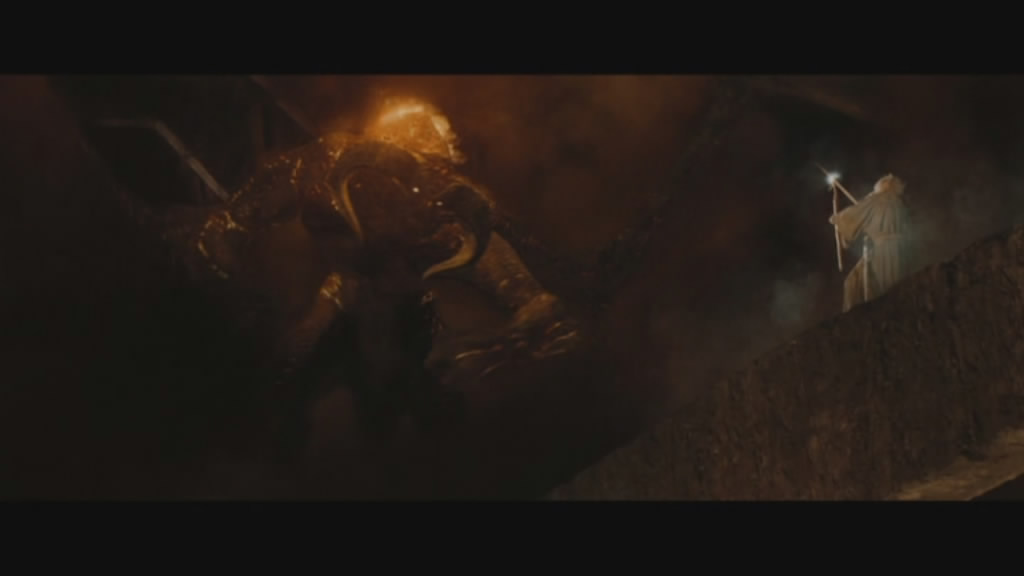
The Fellowship Of The Ring: Reviewing the Story
The first film in the trilogy remains, as is does to a vast number of the legion of loyal fans, perhaps the film with the fondest memories. It was the one that began it all, started the journey for a lot of people, and consequently, that notion of a “new plaything” and the sentimental attachment that comes with that slowly grew over time. It was our first look at the characters, the landscape, the stunning effects and cinematic language that Jackson had created. Fellowship remains the most structurally linear of all three parts, both in the original novel and in the Jackson films. The storyline follows a fairly rigid formality and rigidity in it’s structure, in that everything is told from Frodo’s point of view, for the most part. It is not until The Two Towers that the fellowship breaks, and our characters continue their stories along separate paths.
The thing about the story in Fellowship is the introduction of the world in which we are entering: from Hobbiton to the desolate plains of Mordor, this all requires a level of setup from Jackson that would please both ardent fans, and Tolkien novices. Jackson has to cater for those who know nothing of the books or characters (those poor, unfortunate souls!), and in this problem, the script was vital.
The introduction of a brief history of the Ring and Middle Earth, was a stroke of genius. The opening monologue from Blanchett, as Galadriel, narrating the first War Of The Ring, with Elendil taking it for himself and the consequences thereof, enabled the viewer to get into the right “head space” for the film, with a little potted history, condensed Readers Digest style for the viewer to understand where they fit into the story.
Following this opening sequence, we are taken to Hobbiton, and there we remain for a while, as Gandalf arrives to help Bilbo celebrate his 111th (or, as it’s written in the book, Eleventy First) birthday. Here, we are given a further insight into the world of Tolkien, and the reason Frodo embarks on his quest in the first place. The film follows pretty closely events in the novel, or at least, as closely as they can possibly be told cinematically. Jackson, Fran Walsh and Philipa Boyens have managed to distil the essence of Tolkien’s words into a refreshing, almost familiar world view on Hobbits and their culture. Bilbo’s famous speech at his party is, thankfully, kept intact, drunken slurring and obscure insult included, which I was most thankful for.
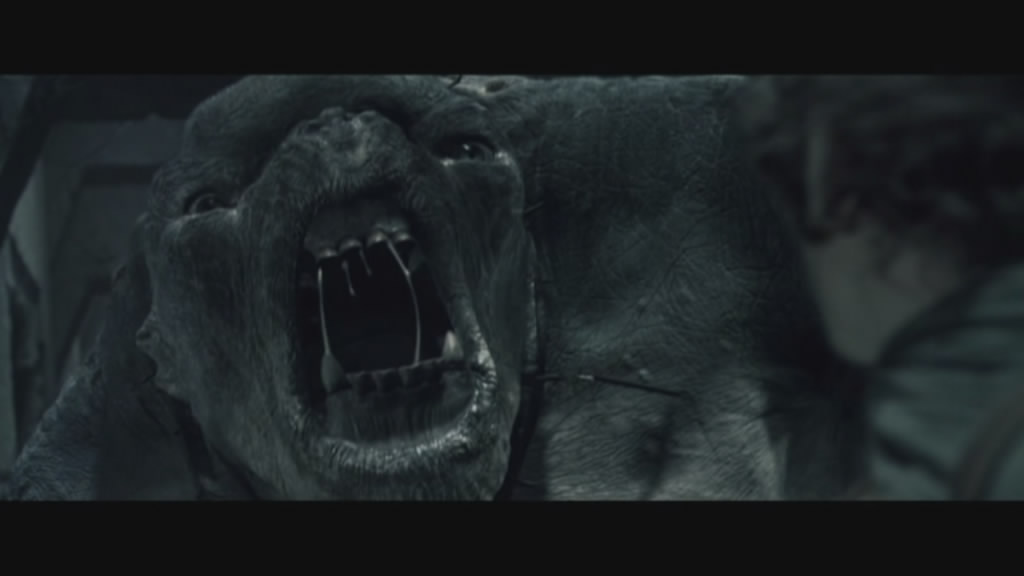
Jackson is forced, through sheer cinematic convention, to compress time considerably from the novel: in the book, Gandalf and Bilbo stay in Hobbiton for some time after Bilbo vanishes using the ring during his speech; here in the film, Bilbo takes off the very same night! It hardly makes a difference, and to be honest, is probably more likely a scenario logically speaking. Otherwise, Bilbo would have been hidden away up in Bag End for days on end waiting for his chance to escape. Nevertheless, this haste to abandon his former life and pass the Ring onto Frodo, allows Jackson to quickly establish the power the Ring has over it’s bearer, and the seriousness with which the Ring must be taken. Bilbo’s reaction to Gandalf’s insistence to leaving the ring behind is almost painful to watch.
One of my favourite chapters from the book is Shadows Of The Past, which is, in essence, a long, expository dealing with the entire history of the Ring, from creation to it’s current position in possession with Frodo. In the novel, Gandalf spends a few days telling Frodo the history he (we) need to know in order to grapple with the situation. In the film, Jackson couples Gandalf’s story with imagery (as they say, a picture tells a thousand words… in this case, Jackson needed a higher ratio to get through it all) and again, I think the essence of that moment in the book is preserved really well.
It’s not until Frodo’s mission to take the Ring to the elven kingdom of Rivendell starts, that the story deviates from the novel. Now, my memory of the book from here on in is hazy at best, and no doubt there are other souls more worthy to describe the differences in a more detailed forum, but suffice to say, a serious amount of story/plot/narrative juggling occurs.
I want to, for a moment, talk about the film’s successes in it’s script; have no fear you equal opportunists, the bad stuff will come along later.
Jackson balances in Fellowship, quite well, I might add, the vast number of speaking roles to which the story is told to, and from. Once the fellowship is formed, midway through the movie, there are nine characters interacting in scenes together all the time, which, for any cinema audience and any director, would normally be a nightmare. But I think part of the success that Jackson has with telling the story with such a bulk of characters, all clamoring for their own stories to be told, is that he’s set them all up so well, that their dialogue and demeanour tell us so much more than simply dialogue alone. Frodo, Sam, Merry and Pippin all have well defined characters during the first half of the film, that you know them like close friends by the time they get bundled into that weird gang of boys meandering about the countryside.
Aragorn, who fan’s will know as royalty, and Legolas, who gives the impression he’s also royalty by the way he acts, are defined in Fellowship not so much by their words, as by their actions. Aragorn is a loyal, skilled friend who always gives a glint that he’s hiding something we aren’t sure about. Legolas, the silky smooth elf from Mirkwood (not mentioned in the film, but certainly so in the novel) is a graceful, immortal soul who is as handy with the blade as he is with bringing down giant elephants. More on that in Return Of The King. Still, both characters don’t shine as much in Fellowship as they do in later films.
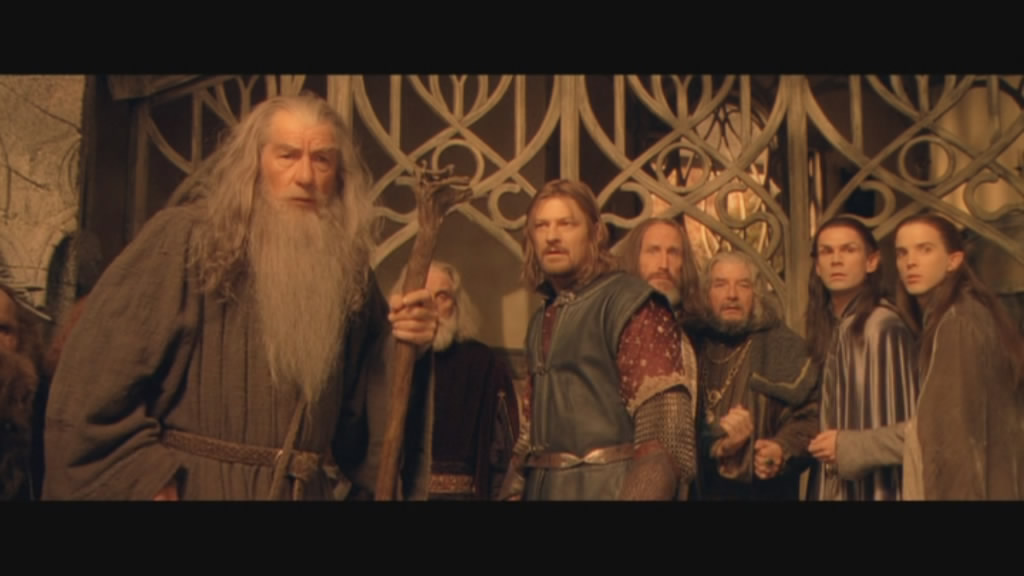
Perhaps the least accessible character in the film, in terms of key core cast, is Rhys-Davies as Gimli. Gimli is, always will be, a valuable hanger on, but a hanger-on nonetheless. His role in the film, while perhaps not as noble as, say, Aragorn, is limited merely to one-liner jokes about being short, fat and hairy. It’s like Jackson realized he had no comedy relief, and cast Gimli as the fall guy. I was unimpressed with how this character was handled, and felt it was one thing Jackson didn’t get right. While this was set to rights later in the sequels, however; in Fellowship, Gimli as a character, suffers from a lack of development, and slips screaming into somewhat of a cliche.
Frodo and Sam’s character development is more solid, and rightly so. It’s their story we really need to hang our hats on, emotionally speaking. After all, they’re the ones we’re going to follow into Mount Doom, so it’s obvious Jackson and Co thought long and hard about these two. While Merry & Pippin are generally more jovial and jokey in the script of Fellowship (changed dramatically during Two Towers and even more so in Return, they still get a degree of gravitas to deliver some powerful moments. Yet it remains with Frodo to persuade us, as viewers, to get on board his story. Our investment in his fate requires us to sit through nearly twelve hours of film, so he’d better deliver the goods. And Jackson has given us a multi-layered, complete character, fallible and frail, so when the test of his courage and fortitude are undertaken, we worry for him, we fail and succeed with him; Frodo is a true symbol of hope throughout the films.
My main grievance with the storytelling, especially from a script point of view, is the character of Boromir. In the book, I felt he was somewhat arrogant, almost aloof from the rest of the fellowship; however in the film, he’s seen as a more faltering, fragile character. I think this is a major slight by Jackson and his writers. Boromir is the son of one of the Stewards of Gondor. His descent into madness in trying to take the Ring from Frodo at a critical juncture, and thus splintering the fellowship, was borne out of an arrogant desire to cover himself in glory for his father, not some limp-wristed “look at what I did” petulance. Boromir always represented the arrogance of Man, to my mind, not the frailty of the human spirit. I understand what Jackson was reaching for in having Sean Bean play him as a man conflicted, his emotions on the surface, but the role Boromir had in society, in his position of power, would preclude him from displaying these emotions.
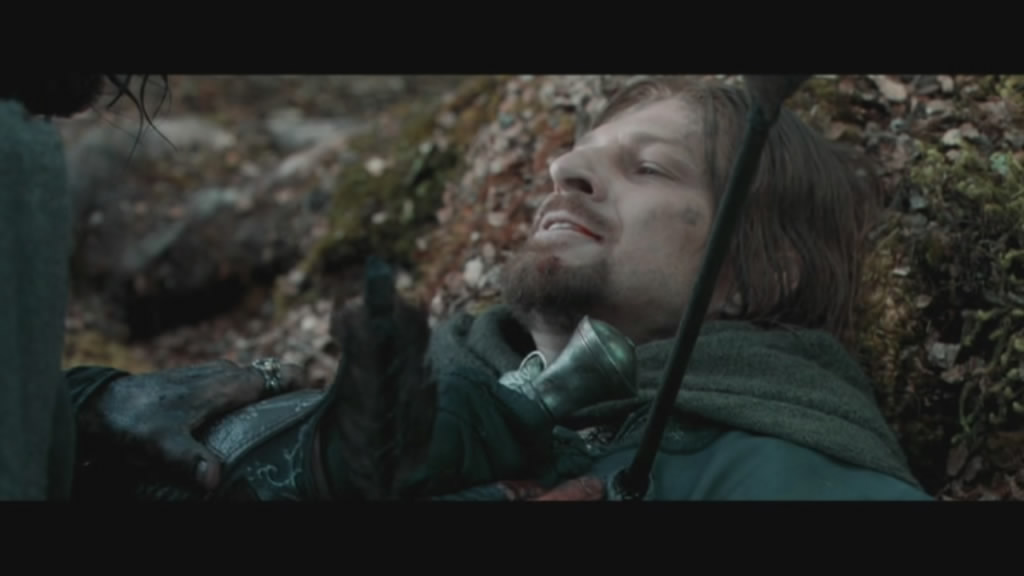
Sean Bean, while delivering a great performance, must be commended for attempting to make a generally rotten character likable. Unfortunately, Boromir isn’t somebody I ever felt good about, and he truly does typify the stupidity of Man who thinks he can solve the problems of the world with a Big Stick and a Loud Voice. his repentance after the fact is, I must admit, truly heartbreaking (and one of the finest performances I have seen Sean Bean deliver) however, I felt the way the character had been handled throughout the film was inconsistent with who the man was, and what he was originally written to be.
Perhaps it’s Tolkien, maybe a little Jackson, but I felt the best moments in Tolkien’s original works were always when something from the past would come back to haunt the present: like the Mines of Moria, with the unleashing of the monstrous Balrog, demon of the underworld. The Balrog was a creature born of flame and fire, buried deep in the bowels of Middle Earth’s mountains: yet the dwarves, digging for their precious gems in the earth, dug to deeply, and unearthed this monstrous form to hunt the hallways of the once great dwarven cities. And it plays’ a fairly significant role in character development in the Fellowship story: it forces Aragorn to lead the way, and reminds us all of just how serious a matter this is.
Gandalf’s defiance of the Balrog, essentially Man versus Beast, is simply staggering in cinematic terms. The visual medium, regardless of how many words on the page can describe something, occasionally meet all your expectations and exceed them. In this case, the Balrog is a perfect example of some stunning design and some pretty nifty special effects. You can see it now, in your mind, as Gandalf resolutely stands before the Balrog, precariously balanced upon the Bridge of Khazad Duhm (who builds such a narrow outcrop of rock and calls it a bridge, seriously!) his staff flickering white energy as the monster lunges towards him. “You cannot pass!” the wizard screams, a tinge of desperation in his voice, overcome by a rage of defiance that lifts us as viewers. For a moment, you think that there should be no way on God’s Holy Middle Earth that Gandalf won’t get out of this with his head still attached, yet he stands there, fury and rage almost consuming him as he protects his charges, who wait, frightened, in relative safety on the other side of the chasm.
Then, the crux of the scene, with Gandalf seemingly defeating the monster, only to be claimed by the darkness, and we, as an audience, are left numb.
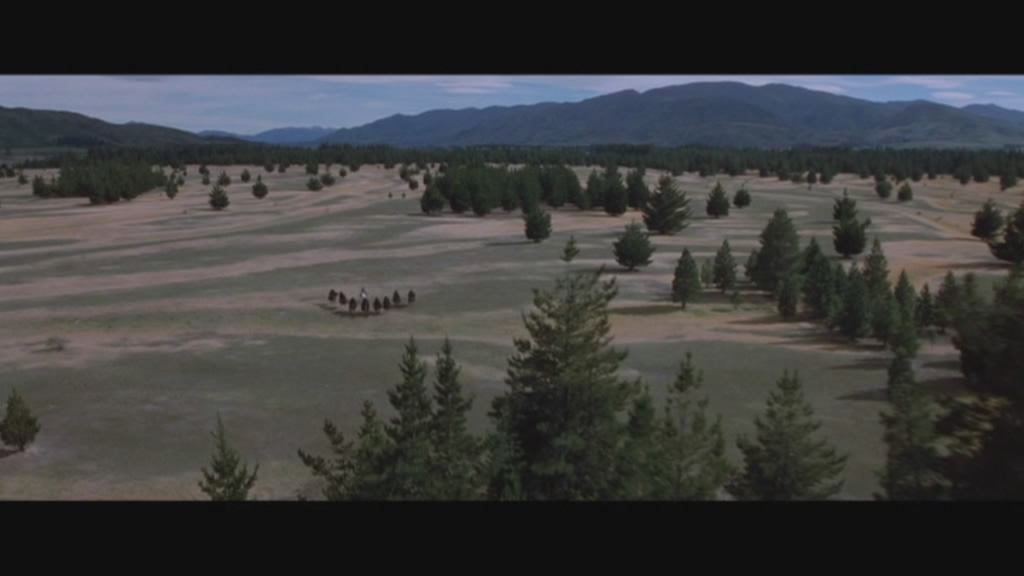
It’s a pivotal moment in the film, and as far as cinema history will go, one of “those” moments. You know what “those” moments are. When Darth Vader tells Luke about his parentage, and the whole audience inaudibly swears in surprise. When Bruce figures it out in The Sixth Sense. When Clarice is fumbling about in the darkness in The Silence Of The Lambs. When Randy Quaid shows up in that fighter jet at the end of Independence Day, and flies straight up into the alien ship. “Those” moments when as an audience, you fell the cinematic equivalent of a tectonic shift, a seismic lurching towards something so indefinably unimaginable it enters the popular lexicon of shared memory. Babies are now born with genetic coding embedded so that they already know that Luke and Darth Vader are related. Yep, one of “those” moments.
What I was also interested, getting back to the storytelling for a moment (yes, the rush of blood has passed folks!) in seeing was Jackson’s handling of the infamous Council Of Elrond sequence. In the novel, as mentioned countless times by Jackson and anybody else involved with writing the script, it’s simply a chunk of dialogue stretched over nigh on fifty pages plus. Character after character, in the novel, gets up and has a whinge about what’s happening, and why they should do something about it. History is also expounded upon, with Gandalf getting more airtime after his twaddle in Chapter Two. So how did Jackson get around this massive dead spot in the middle of the dramatic narrative? Well, he pruned the scene back to it’s bare essential point: to get Frodo and Sam off to Mt Doom, accompanied by his companions. And, to re-establish the importance of doing so.
So pruned back, the scene is, that Elrond is perhaps the main orator in the whole sequence; even though Boromir gets a turn, and Gandalf sticks his beak in from time to time, essentially, its a scene where Hugo Weaving gets to Mr Smith-ise again (can you spell typecasting?) and reiterate the plot, for those who may have been asleep up until the chase to the river with water horses in it. With Liv Tyler telling those mongrel black riders where they can stick their awesome blackness.
Yet, for all the material expunged from that scene, Jackson has retained the essence, the importance of what the novel version contained, and it’s this essence that we as an audience can pick ourselves up, dust down, and get back on the narrative horse to continue the adventure.
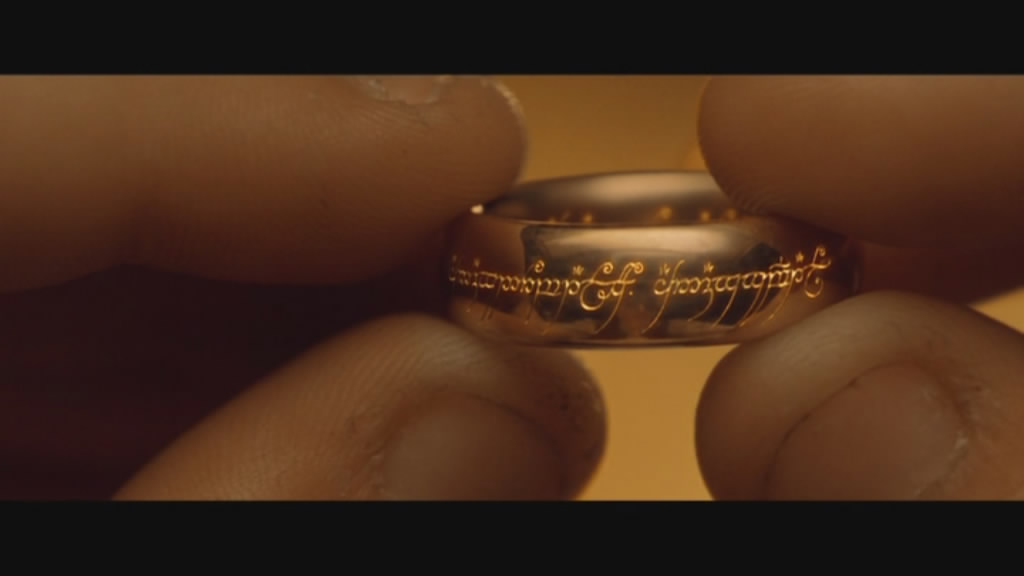
Effects, Editing and Pacing
As far as the opening gambit was concerned, Fellowship was always going to be the key: the film had to set up the world, the characters and the drama, as well as cater to both novice Tolkien viewers and the loyal fans. The right mix of storytelling prowess had to be infused within the film, otherwise it would ultimately fail, become to confusing to the many who were not familiar with Tolkien’s world, and alienate those who were.
Fellowship sticks pretty closely to the original novel, at least, in as much as a film can without becoming weighed down by excessive exposition. Jackson craftily inserted events and characters where there were previously none, such as Arwen’s flight to the ford with the dying Frodo. Although much more straightforward than the follow-up films, Fellowship retains a sense of freshness and interest in the setup of the world of Middle Earth and it’s multitude of characters, Jackson laying waste to our preconceptions from the outset with the massive battle on the slopes of Mount Doom, with Elves and Men standing shoulder to shoulder against the forces of evil, epic storytelling announcing that this version of Lord Of The Rings was never going to be a mild mannered, low budget affair. Of course, once Jackson had opened his film with such a ball-tearing opening stanza, how could he possibly follow it up? He doesn’t try! He simply moves the story to the tale of Bilbo’s birthday, half a world away and thousands of years hence. Juxtaposed against the fierce battle of ten thousand soldiers, and the vanquishing of Sauron and the taking of the One Ring, the birthday party would, at first glance, appear to be in the wrong film. After all, it’s such a mild transition, you’d be forgiven for thinking so.
The interesting thing about Fellowship’s structure, though, is not only the compression of time within the film (things that took years in the novel only take days, or even hours, in film time) but also the humanizing of the core characters. Plus, a very frugal intimacy with CGI effects to help tell the story, rather than overly crush the story beyond help (Lucas, I look in your direction… ptwooee) creates a sense of reality on the screen that the audience simply cannot help but become involved with. Careful planning of key moments, from Frodo’s heartbreaking realization of exactly what’s involved in destroying the Ring, to the Balrog sequence, to the final battle sequence with Aragorn, Boromir, Gimli and Legolas showing us fully what they are capable of; Fellowship is an exercise in scripting and editing.
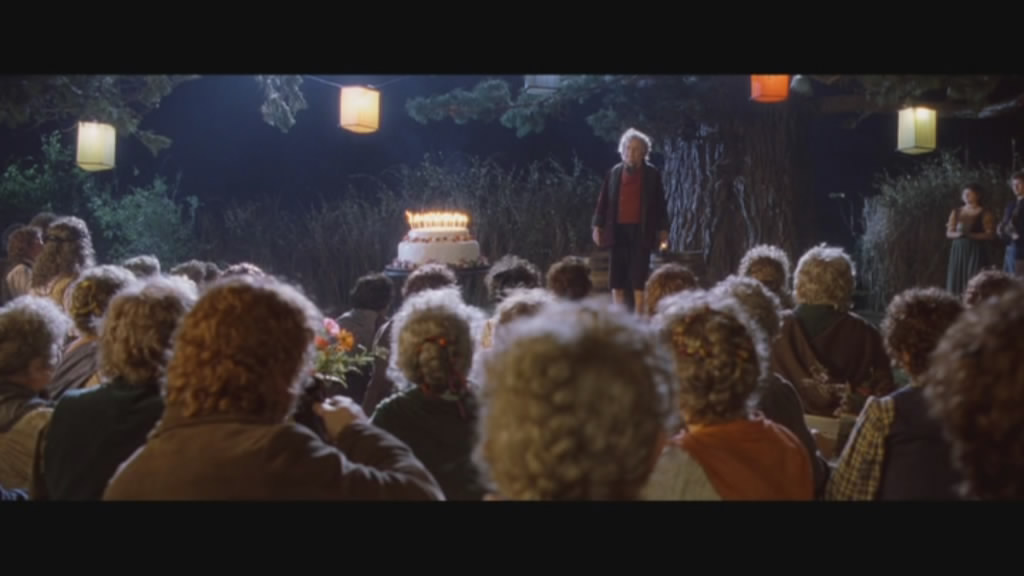
The problem with epic films like this, is that an audience can usually only follow so much story, take in so many new ideas, that by the end of a film you can feel a bit overawed… perhaps even confused. The plot has to be strong enough to support the length of the film, and this is where films like Fellowship ought to start to crack up under pressure. Yet, Jackson’s assured direction and ability to craft a narrative from his camera, while remaining both faithful to the original story (and yet not enslaved by it) makes Fellowship a revelation at each turn. At no point in the film would you catch the audience napping, attention waning and checking the watch to find out how much longer there is. The moments in the Shire, which essentially ground the film is a kind of fairy-tale world where almost anything is possible, are lengthy, yet given the nature of the length of the trilogy, essential to the plot, and to the emotional attachment we have when threatened by Sauron and Saruman. The journey to Rivendell, with the four hobbits pretty much on their own for much of the time (until the village of Bree, where they encounter Aragorn) is leisurely paced, yet still engrossing. And when the fellowship sets out from Rivendell, and enter Moria, Lothlorien and journey to the cusp of the Falls of Rauros, there isn’t really any moment that could be culled from the film that wouldn’t lessen the story’s impact.
Jackson deals with the enormous cast in the best way possible: simply let the character speak for his/her self. Each hobbit, elf and man, as well as our resident Wizard, get’s a moment or two in the film to shine, often in smaller ways, but occasionally in broad strokes of editing and storyline. Aragorn, perhaps with Frodo and Gandalf, get the lion’s share of “events” within the film, yet the accompanying cast get their own story arcs, which adds much to the rich tapestry of the film. You never feel like any character has been shoehorned into the story, each member of the fellowship is meant to be there, and without him, they’d be a lesser group for it.
One criticism of Jackson, prior to the announcement that he would film the trilogy, was his seeming preoccupation with fancy camera moves, using the extreme close-up and overtly tricky shots to tell the story: most fans of Tolkien hoped that Jackson would show some restraint in this regard, as the story was perhaps not entirely suited for camera-tomfoolery. It must be said that Jackson has acquitted himself extremely well in this regard. His camera angles, use of lighting and prowess in the editing room ensure that the camera-ballet of Dead Alive and The Frighteners was given a little rest, except in moments where it was acceptable: the arrival of Saruman’s Orcs, for example, and whenever evil is on screen. I think the intent was, to use those camera techniques of old to represent where evil/filth is on the screen, and a more steady, familiar camerawork whenever you’ve got a fellowship member on screen.The epic, frightening battle in the caves of Moria, and the Balrog sequence, are both energetically frenetic and steadfastly secure: Jackson’s handling of these large scale action sequences is simply astounding. Most film directors wouldn’t have the balls to carry out what Jackson achieved in this milestone scene. Yet, for all the epic, widescreen storytelling, it’s the human (or, as the case may be, hobbit) element that keeps us enthralled. As we go through each of these adventures with our cast, we are exposed in small ways to their individual personalities. Pippin, somewhat of a creature of comfort, is perhaps a little representative of the naivety of all of us, blindly blundering into events that he can have no possible knowledge about, and is almost resolutely fascinated with food and drink. Merry, meanwhile, enjoys a good time, and yet is able to stand and be counted when required: “Right. Buckleberry Ferry!” he calls, when confronted with fight or flee, run and hide or continue on the journey with Frodo and Sam, at the moment they are all about to be captured by the Black Riders. Merry exposes what is best in humanity; the accountability and responsibility to help your fellow man, no matter the potential cost.
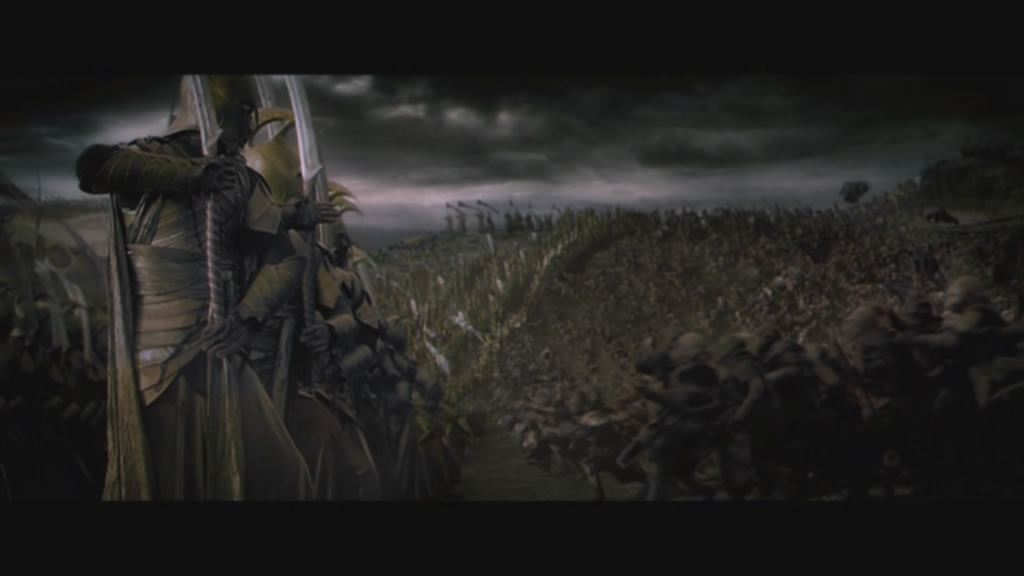
Sam, however, gets perhaps the most short-shrift of all the characters in this film: perhaps because Jackson is holding him back for film three, when he comes into his own. Frodo, as mentioned earlier, gets a fair chance to develop his character and engage the audience.
And what about the visual effects. There would be no way known that a story as epic, as filled with magic, as Lord Of The Rings could not possibly be made without the use of computer effects. Jackson’s penchant for the obscure and amazing is rife for exploitation by the CGI team, and they deliver in spades. The WETA team, responsible for almost every aspect of the film, from costuming to all the digital work, outdid themselves in every sense of the phrase on this film trilogy. They began lightly, holding Gollum back for The Two Towers, which enabled them to concentrate their efforts on the dazzling Moria sequence, the opening Sauron battle, and some of the best not-quite-sure-if-it’s-digital effects ever seen to that point, on screen. The wonderful thing about the film’s effects, and in fact, this point can be made about the entire trilogy, is that the effects work for the story, and don’t detract from what Jackson is trying to show us. The effects, when used up front to create an entire character (such as the Balrog) are first class, almost surpassing the term “effect” and becoming a living, breathing, object. A fair portion of Fellowships screen time makes use of limited effects, the last third of the film excludes them almost entirely: the final battle sequence, with orcs, dwarves and men all battling each other, is as real as it gets. And you can tell. The Moria Cave Troll battle, while expertly filmed and spectacular in it’s own right, is a show-piece in any other film… here, it’s almost treated as a throwaway scene with Jackson taunting us that the best is yet to come.
If you want a better analogy, try this: Jackson achieved in his trilogy, what George Lucas can only dream of achieving in his misjudged Star Wars prequels. Where Jackson utilizes effects to tell the story, Lucas tries to make the effects into the story. The problem with Lucas is that he’s got no sense of drama. Really, no sense of building a character, infusing that character with life on screen. Instead, Lucas is simply content to stick a generic, badly designed digital effect on screen, move some limbs and make it speak some kind of language that requires subtitles, and call that a major character. And then wonders why his films all feel like some kind of bizarre computer game. At least Jackson understands his story, and his audience better. Effects will not tell a story for you: they’ll assist you to a large degree, but ultimately, you need a reason to have those effects, not just the ability to.
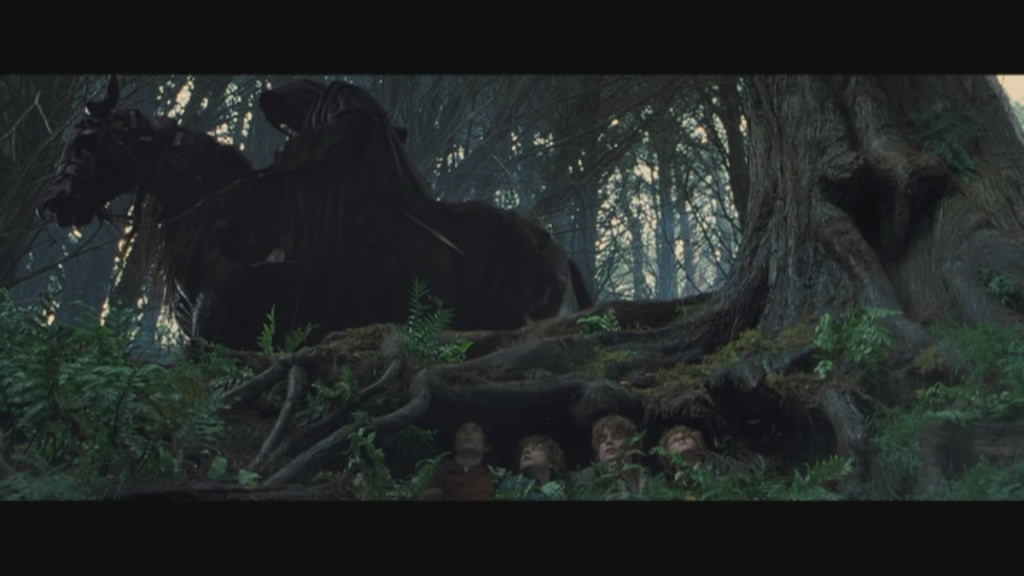
The Fellowship Comes To An End
The critical and commercial reaction to Fellowship was staggering. And rightly so. The film is almost superb in every sense. Thankfully, Jackson’s gambit of filming all three movies at the same time would appear to be the right choice. A sense of continuity would exist within each film, which only comes from the same creative team, the same cast, the same crew, all working on the thing from start to finish. Imagine if they’d filmed one film at a time? Ian McKellan dies before filming on Two Towers is due to start, and they have to replace him. Viggo Mortensen has plastic surgery to improve his nose or something, and he doesn’t look the same in The Return Of The King. Imagine how stupid it would have been. It’s almost inconceivable that the films could have been made independently of each other. Thankfully, they weren’t.
And the best thing: they were actually good films! The world collectively held it’s breath as Fellowship opened around the world, and the exhalation afterwards was one of relief and a sense of awe. Awe for what Jackson and his team had achieved, and a sense of excitement for the fact that if this was only the opening move, what on earth was coming in films two and three!
I remember sitting in the cinema watching Fellowship on Boxing Day, 2001. I remember watching it and thinking that, if they could do this for fairly simple things like Hobbiton, and get it so right, what would they manage to accomplish in Return Of The King, with the battle of Minas Tirith? I was excited, amazed and overjoyed all at the same time. I remember walking from the cinema wondering how it could get any better than this. I think it’s fair to say that the three years of Lord Of The Rings films will be regarded by cinema watchers and almost a renaissance of sorts for Hollywood, when the magic came back to the big screen. Prior to that, we’d had The Phantom Menace, all build up and no follow-through: here was a film trilogy worth getting excited about!
A lot of the audience in the cinema at the time, I remember, were asking if that was it, when the credits rolled. Most of those voices belonged to girlfriends of guys who wanted to watch the film. When explained that the film was part of a trilogy, and the rest were coming out a year apart, you could almost see the bottom lips droop out in dismay. While the anticipation for Fellowship had perhaps been muted, given that nobody knew what the film was really going to be like, Jackson now had his work cut out for him to prove it wasn’t a fluke, in film two. Now that the series was going to be a hit, every effort had to be made to go further than they had in Fellowship. The big question was: could Jackson and Co pull it off again?


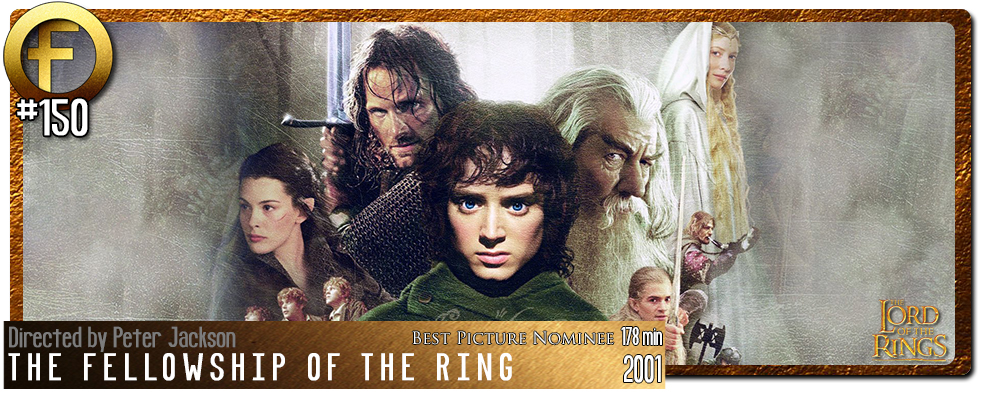
The reason why this first part of Jackson's 'Lord of the Rings' is superior to his latter two parts is because of restraint. Jackson was restrained from over doing it with the CGI and "epic" battle sequences, which in my opinion does not make a story epic. Part of the reason was simply because Tolkien did not have very many battles in the first part of his book, which thankfully forced Jackson to focus on creating a believable world rather than a believable hack-n-slash action movie.
I don't find much entertainment in watching people mutilate each other, but I love it when a movie engages me in a world, and 'The Fellowship of the Ring' does just that. Certainly the most breathtaking scenes in the movie are the moments of patient observation, when the camera pans around and captures the beautiful settings of Middle Earth. I must give Jackson credit. He did hire some very extraordinary artists that have envisioned one of the grandest interpretations of Tolkien's world.
There are about five particular moments that stick out in my mind and gave me that tingle of goosebumps down my spine when I saw them for the first time. The first is the introduction to Hobbiton. After the somewhat awkward prologue, I was beginning to have my doubts to whether the movie would live up to the book. But the movie surprised me. Hobbiton is perfect. The houses have flower patches and old fences, the roads look worn and made through decades of travel, and the Old Mill spins with the laziness of a quiet town. Every color is vibrant and every moment looks as through it was taken out of a picture book. Although I still don't agree with the particular look of the Hobbits, I believe everything else in Hobbiton is worthy of Tolkien's words.
The second moment comes after Frodo's awakening in Rivendell, and the third, during the exploration of the Halls of Moria. In both moments, the camera pans away from the characters and outward into a static shot of their surroundings. The moments make us feel like we're turning our heads and gazing at the world around us just as the characters do. The golden waterfalls of the elven city mark an interesting contrast with the dark halls of the dwarfish mines, but each are inspiring in their own ways and add to feeling of being engaged in a living world.
My other favorite moments come during the exploration of Lothlorien and the passage down the Anduin. And while I won't go into detail about the scenes, since they really should be experienced without any prior expectations, they are monuments in imaginative cinema. 'The Fellowship of the Ring' is one of those rare movies that I always wish I could reexperience for the first time. Unfortunately, Jackson turned away from exploring Middle Earth in his next two movies, and instead, turned to fighting and warfare. He seems to take a lot of pride in the love story and battle sequences he created in 'The Two Towers' and 'The Return of the King,' but it is was in his first movie when he really got it right. In 'The Fellowship of the Ring,' it's okay if the characters are uninteresting and have silly dialogue. Middle Earth is the star, and the characters are the ones seeing it for the first time.
I don't think I can add much more to this than a simple "yep", so here it comes.
Yep.
Oh, and it's not over yet, either!! This is just the START of what I've got lined up this week! 🙂
What, you need a rating after that??? C'mon, I would have thought it pretty obvious! 🙂 🙂
You don't have a rating for the film?
Sorry if you mentioned it, I just haven't had a chance to read the whole post yet, although it does at least start of rather interesting, so I'm looking forward to reading the rest.